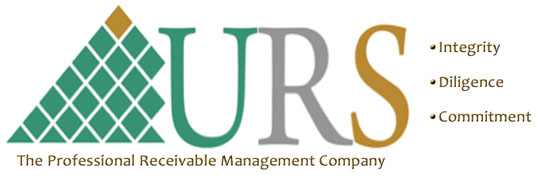In Ohio, it works very well indeed
The spring of 2002 was not a happy one for many of Ohio’s physicians. Professional liability insurance rates had skyrocketed, making coverage unaffordable and sometimes unobtainable, especially for those in high-risk specialties like obstetrics, neurosurgery, and orthopaedics. Many physicians were considering retiring early, moving, or eliminating high-risk procedures. The American Medical Association had placed Ohio on a list of states considered “in crisis.”
As a result, the Ohio State Medical Association (OSMA) took action at the state government level to reform Ohio’s tort system, so that physicians could stay in practice and continue caring for Ohioans. From 2002 to 2004, OSMA and its members helped enact 20 sweeping medical liability reforms that provided relief from the liability crisis.
A “supreme” effort
Like many states, Ohio had seen the state legislature pass tort reform measures, only to have the laws overturned by the state supreme court.
To help ensure that these reforms “stuck,” OSMA, Ohio physicians, and other interested parties undertook the task of changing the philosophical make-up of the Ohio Supreme Court. This was accomplished by supporting candidates who held a “judicial restraint” philosophy. Prior to 2002, the Ohio Supreme Court was considered an “activist” court, one that “legislated from the bench.” At that time, four of the seven justices fit that label.
Today, 6 years and three election cycles later, the Court is considered to have a 6-to-1 “judicial restraint” majority, one that defers public policy matters to the legislative branch. With this new philosophical majority and a new law that addressed prior Court decision reasoning, tort reform measures have a much better chance of being upheld if challenged.
The benefits of reform
As a result of the tort reform efforts, the total number of medical liability suits has declined, insurance rates have stabilized, and the liability insurance market is more robust.
In 2005, the first year that the Ohio Department of Insurance collected data on medical liability claims, 5,051 medical liability claims were closed. Of these, 21 percent (1,046) resulted in a payment to the claimant. One year later, 4,004 claims were closed and only 794 resulted in a payment to the claimant.
In other words, there was a 20 percent reduction in overall claims from 2005 to 2006 and a 24 percent reduction in claims resulting in a payment.
Additionally, the 2005 data revealed that claims subject to the new tort reform law had indemnity payments nearly $100,000 less than claims not subject to the new law.
Starting in 2001, medical liability insurance premiums began to increase significantly—22 percent in 2001, 30 percent in both 2002 and 2003, and 20 percent in 2004. Once the tort reform proposals had time to work, rate increases began to moderate; rates increased just 6.7 percent in 2005 and actually declined by 1.7 percent in 2006 and by 10.9 percent in 2007. The 2007 rate reduction translates to an average savings of at least $1,000 per Ohio physician.
In 2000, Ohio had nearly 30 medical liability carriers who provided professional liability insurance for physicians. At the height of the liability crisis in 2003, the state had only five carriers, three of which were showing increasing financial difficulty. Today, however, Ohio has 15 companies competing for business in a more robust and predictable medical liability marketplace.
Holding trial lawyers accountable
In addition to its efforts for tort reform, OSMA also created a Frivolous Lawsuit Committee to fight back against trial attorneys who file frivolous claims. The committee, made up of physicians and lawyers, reviews possible cases of alleged frivolous conduct by a plaintiff’s lawyer. Then, if warranted, the committee will assist defense counsel with seeking sanctions against that lawyer for filing the frivolous claim.
In three separate cases, the court sanctioned trial attorneys and the physician defendants were awarded recovery of defense costs totaling more than $35,000. Most importantly, these cases have provided a legal precedent in Ohio for holding trial attorneys legally and financially responsible if they file a frivolous lawsuit.
A positive outcome
The medical liability changes that have occurred in Ohio since 2004 have had positive effects: the medical liability insurance market has stabilized, insurance rates have declined, court case filings are down and physicians no longer have to worry that a liability insurance crisis will drive them out of practice.
In response to the critics of tort reform, we can say that all of the changes still permit those with legitimate liability claims to have access to the courts and access to reasonable and fair compensation.
Does tort reform work? One only needs to look to the Ohio experience as proof that it works very well indeed.
Tim Maglione, Esq., is senior director of government relations for the Ohio State Medical Association.
Like many states, Ohio had seen the state legislature pass tort reform measures, only to have the laws overturned by the state supreme court.
As a result of the tort reform efforts, the total number of medical liability suits has declined, insurance rates have stabilized, and the liability insurance market is more robust.
In addition to its efforts for tort reform, OSMA also created a Frivolous Lawsuit Committee to fight back against trial attorneys who file frivolous claims. The committee, made up of physicians and lawyers, reviews possible cases of alleged frivolous conduct by a plaintiff’s lawyer. Then, if warranted, the committee will assist defense counsel with seeking sanctions against that lawyer for filing the frivolous claim.
The medical liability changes that have occurred in Ohio since 2004 have had positive effects: the medical liability insurance market has stabilized, insurance rates have declined, court case filings are down and physicians no longer have to worry that a liability insurance crisis will drive them out of practice.
